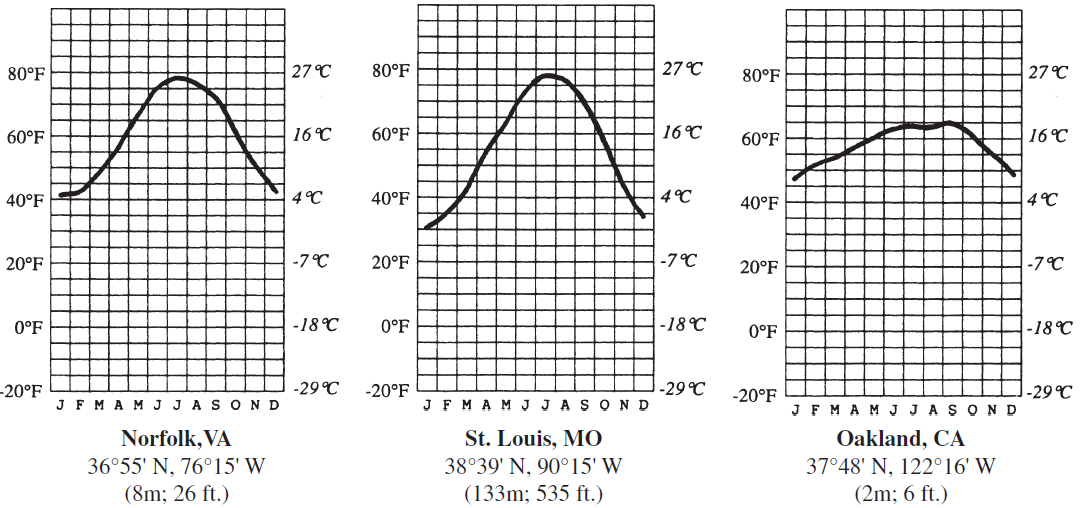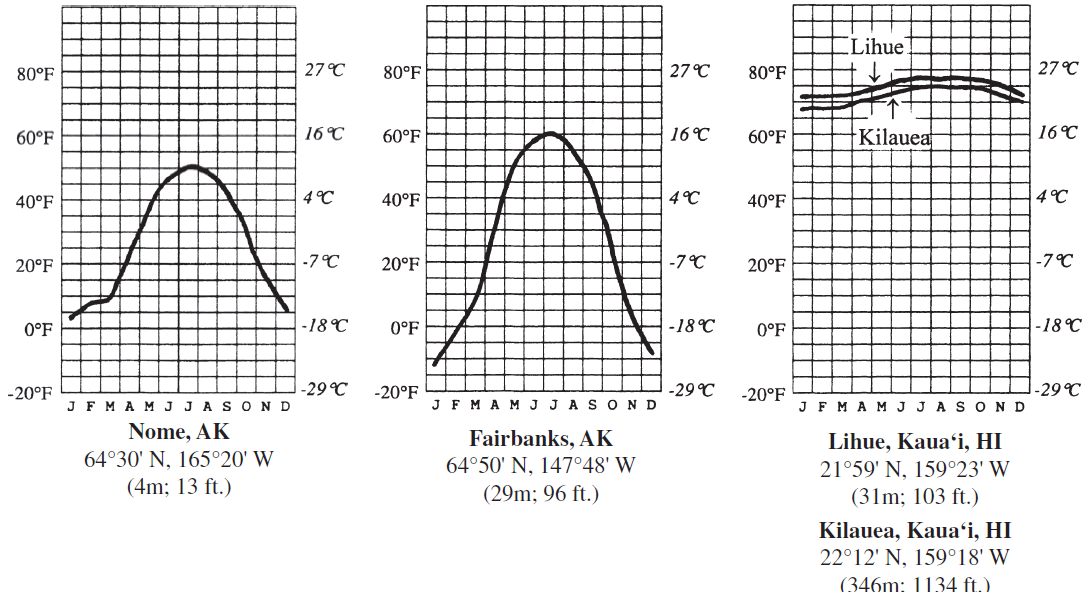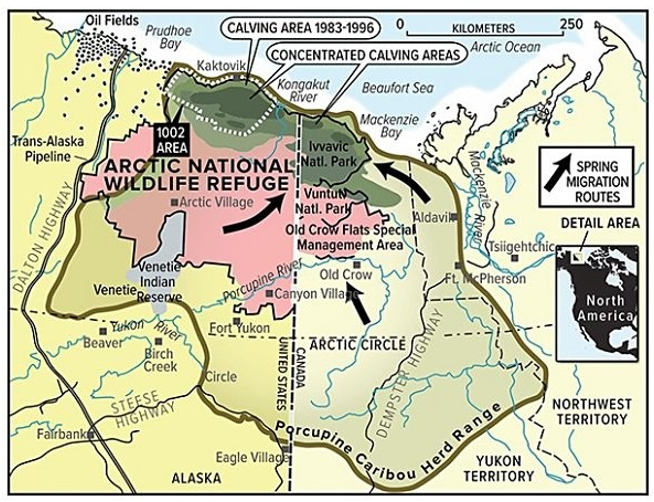Which factor primarily explains the difference in temperature patterns between Fairbanks and St. Louis?
Six charts showing the average monthly temperature (in °C and °F) for seven U.S. cities are provided (the first letter of each month of the year is shown along the bottom of the charts). For each of the cities, the latitude and longitude, as well as the elevation, are provided.


Answer the question by comparing the temperature charts. In your answers, consider the one temperature control factor that is most responsible for the patterns shown (choose from latitude, land–water contrasts, wind patterns, or altitude). You may use the same answer for more than one question. You should locate each of the cities on a world map before trying to answer the question. If altitude is the main factor cited, calculate the expected temperature difference between the two cities based on the average lapse rate.
Latitude: Fairbanks is at higher latitude than St. Louis.
You might also like to view...
On the map below, all of the following would be considered "interpretations" except

A) spring migration routes.
B) Ivvavic National Park.
C) concentrated calving areas.
D) porcupine caribou herd range.
Which of the following is not a common trigger for slope failure?
A) Adding water to a slope B) Volcanic eruption C) Shaking during an earthquake D) Oversteepening of cliffs or hillslopes during road construction E) All of these are common triggers for slope failure.
Which of the following stages of a tropical cyclone's "life" is least energetic?
A) tropical storm B) tropical depression C) typhoon D) supertyphoon E) tropical disturbance
The field of conservation biology ________
A) was initially viewed as too measurement oriented, looking at details and not at the big picture B) attempts to integrate an understanding of evolution and extinction into their field research C) tries to conserve every species, everywhere D) endeavors to increase speciation events in order to increase biodiversity E) developed in response to government intervention